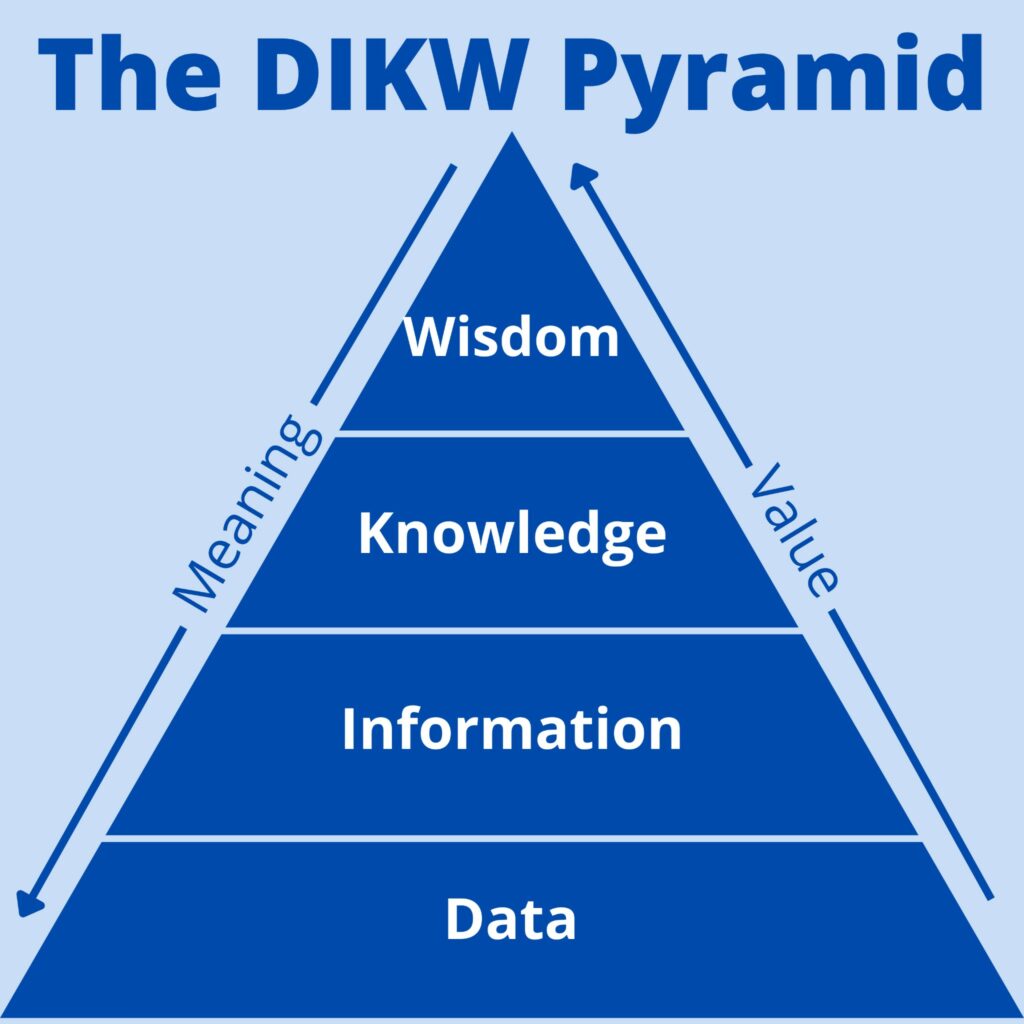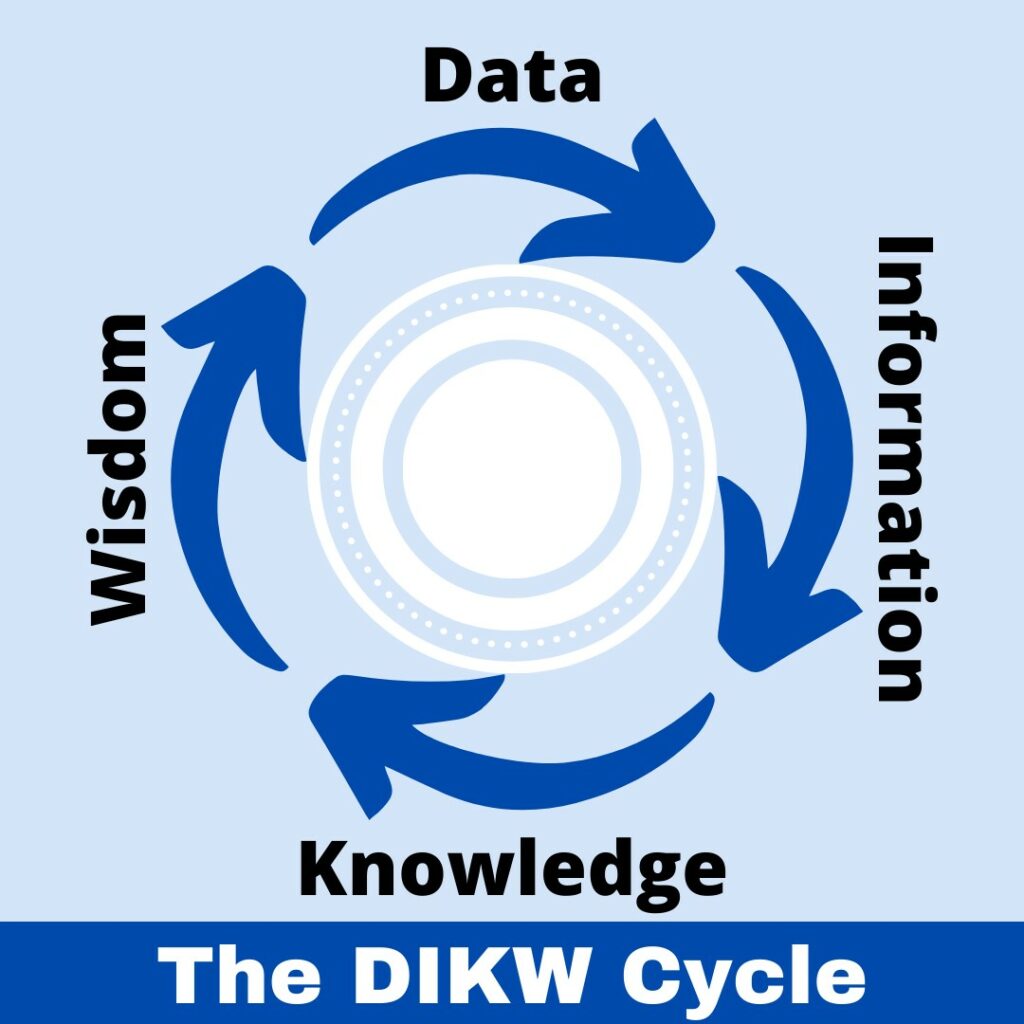We know how difficult it can be to make telecom decisions, and today’s article is all about a model of knowledge management that can help. Today, we’re breaking down the DIKW Model and showing you how to apply it to the telecom procurement process.
Keep reading to learn:
- What the DIKW Model is
- Each of the parts of the DIKW Model
- Which human biases may play a role
- The benefits and criticisms of the model and how to use it in telecom procurement
If you’re feeling fed up with the procurement process, don’t panic–we’re here to help you! Here at Technology Procurement Group, we’ve spent years sharing our expertise with others so that they can employ the right strategies to achieve their business objectives and benefit from cost savings. Just fill out the form on our Contact Us page for more information, or reach out by phone at 1-888-449-1580 or email at info@TPG-llc.com.
Table of Contents
What Is the DIKW Model?
The DIKW Model goes by many names: the DIKW Pyramid, the Knowledge Pyramid, the Wisdom Hierarchy, and the Information Hierarchy, to name just a few.
DIKW stands for Data, Information, Knowledge, and Wisdom. Explained briefly, data becomes information when given context; information becomes knowledge when given meaning; knowledge becomes wisdom when given insight.

This knowledge management-based model represents the way people (and technology) take in data and transform it into information, then knowledge, and finally, wisdom. Once wisdom has been attained, it can be used to make decisions and take action.
DIKW looks at various ways of finding insight and value from all types of data. It’s typically presented visually as a pyramid and is assumed to work linearly as a contextualized progression of data.
As questions are answered about the initial data and that data gains more meaning, it becomes information, knowledge, and then wisdom, in that order. The model represents the relationships between each of the four pyramid sections, with each section operating as a step to the next level.
Once you’ve reached the top of the pyramid, it’s possible to turn the insights and knowledge into a learning experience that guides decisions and actions. Although it has its limits, this model is frequently used because it offers a simple but strong metaphor for data transformation.
This shift from data to wisdom often takes place in digital transformation. With Industry 4.0, IoT (Internet of Things), and AI/ML (Artificial Intelligence/Machine Learning), the decisions made and actions taken due to this process can be semi-autonomous.
The DIKW Model: Data, Information, Knowledge, and Wisdom
Let’s look at each part of the model in detail.
Data
Data, the first building block of the DIKW pyramid, is a collection of facts in an unorganized, raw form, such as characters, numbers, signals, or symbols. Take the sequence of numbers 04042004, for example. It doesn’t make much sense on its own; without any context, it has no meaning. But given the context that the sequence is a date, it’s clear: 04042004 means April 4, 2004. The data has now become information.

Information
Information is what you have when the questions of who, what, when, and where have been answered. It is data made functional or data that has a specific purpose. Information is easier to measure, visualize, and analyze. Data processing can involve validation, aggregation, organization, and other operations. While the questions who, what, when, and where are associated with information, the question of how is associated with knowledge.
Knowledge
The third part of the DIKW pyramid is knowledge, and it takes pieces of information and connects them with others to understand how to apply that information to achieve a goal. Generally, the move from information to knowledge is thought to be the most significant jump between sections of the pyramid. Information enables people to understand relationships between data, while knowledge allows them to recognize patterns. Knowledge is sometimes described as a mental structure constructed from systematic information analysis and accumulated learning.
Knowledge answers “how” the information is relevant to goals, “how” pieces of information can connect to others to create more meaning and value, and “how” the information can be applied to achieve goals. It evolves from information that has been accumulated over time and is associated with definitions, concepts, theories, and axioms. Once the knowledge and insights gained from the information can be used to make decisions, the final building block of the pyramid has been reached.

Wisdom
Wisdom is knowledge that is applied in action. It answers the questions, “Why do something?” and “What is best?” After working with information for a long time and obtaining sufficient knowledge, a person will arrive at wisdom, which allows them to predict specific scenarios based on past experience.
Think of outstanding investors in the stock market, for instance, who have honed their investing skills through years of collecting and interpreting data. When looking at the parts of the pyramid, data and information are associated with the past. In contrast, knowledge and wisdom are associated with actions taken in the present and goals meant to be achieved in the future.
Right now, wisdom is thought to be a purely human skill. However, technology, specifically AI, is catching up very quickly. Once AI wisdom becomes better than human wisdom, it will be fascinating to see the outcomes that result.
The Decision-Making Cycle
The decision-making cycle begins with bulk data collection, using measurements, tracking, recording, and logging. This is the Data section of the pyramid.
Next, the data is organized, processed, and stored, typically using Business Intelligence (BI) software. This is the Information section of the pyramid.
At this point, past experience is evaluated, correlating with the Knowledge part of the pyramid.
Finally, the action plan is determined, and the Wisdom section of the pyramid has been reached.

Although the pyramid is now complete, there are a couple more steps in the decision-making cycle. These include taking action, analyzing the results of that action, and correcting the initial plan. The final step involves exploring the long-term consequences of the decision made and capturing the experience. These steps are sometimes included in what is called the Advanced DIKW Pyramid.
Human Biases

There are two main biases to be aware of when thinking about the DIKW pyramid. First, there is the representativeness heuristic. This is a mental shortcut that estimates the likelihood of events by comparing them to a prototype already existent in the mind. For example, an investor may automatically assume that a good company makes good investments.
The human brain loves to find patterns, and it constantly tries to understand and predict them, often leading people to jump to conclusions much too soon. Knowing that humans have this tendency enables people to slow themselves down rather than inferring patterns early on in the process.
The second bias is Availability Bias, which attempts to generalize findings using the most obvious information. It relies on immediate and urgent information and means that people often weigh their judgments toward the information they’ve heard most recently.
The Value and Benefits of the DIKW Model
Reaching the Wisdom section of the DIKW pyramid is highly beneficial, not only in general but for procurement teams in particular. With wisdom comes better decision-making and enhanced judgment throughout the procurement process. Wisdom also enables a better understanding of the future, facilitating dramatic forward progress for the company as a whole. This can even elicit organizational change and increase companies’ profitability.
In addition, a 2018 McKinsey survey showed that data-targeting companies tend to be more effective than their competitors. This has to do with their strong data-governance practices and clear data strategies. In this way, the DIKW model plays a role in developing a “data-first” culture within the company’s decision-making process, thereby increasing the company’s effectiveness.
Criticisms of the DIKW Model
There are a few common criticisms of the DIKW model. The first is that it’s strictly hierarchical and only moves in one specified direction. With today’s advanced technology, the path from data to wisdom doesn’t always take this prescribed route. In the age of APIs (Application Programming Interfaces) and self-learning systems, there are many more crucial aspects of knowledge, data, and information.
There are also many more methods of capturing data and turning it into action, sometimes even skipping steps in the DIKW Model, as in the case of self-learning systems.
Some complain that this model undervalues data. A related criticism is that data is often gathered for a reason, and that reason involves wisdom and decision-making. Therefore, the pyramid may be more of a circle or cycle.

Some take issue with the simplicity of the DIKW model. It’s assumed that the transformation from data to wisdom goes quite smoothly, but there may be roadblocks and barriers in reality. For example, a person can be overwhelmed with the amount of data taken in and thus stuck at the bottom of the pyramid. There may be too little or too much time spent at certain levels. And in some cases, steps can be skipped, whether by accident or purposely.
It’s been suggested that the DIKW pyramid could be enhanced by adding a fifth section: the decision itself. This is because, in some situations, analytical processes and decision-making processes take place in parallel but never intersect. Adding this fifth step ensures that the processes come together and are thus more effective.
Unlock the Opportunity with Technology Procurement Group

Telecom and IT procurement can be challenging, and if you’re not an expert, it can be hard to know whether you’re getting the best deal for your company.
Whether you’re stuck on strategy or having a hard time determining which vendor will be the best fit, TPG is here to assist you.
Not only do we offer telecom procurement strategy consulting and IT procurement services, but we can also provide telecom expense management, wireless expense management, RFP management, wireless expense reduction services, and telecom contract negotiation.
Ready to work with us, or interested in getting more information? Call us at 1-888-449-1580, email us at info@TPG-llc.com, or fill out the simple form on the Contact Us page. We look forward to working with you!




